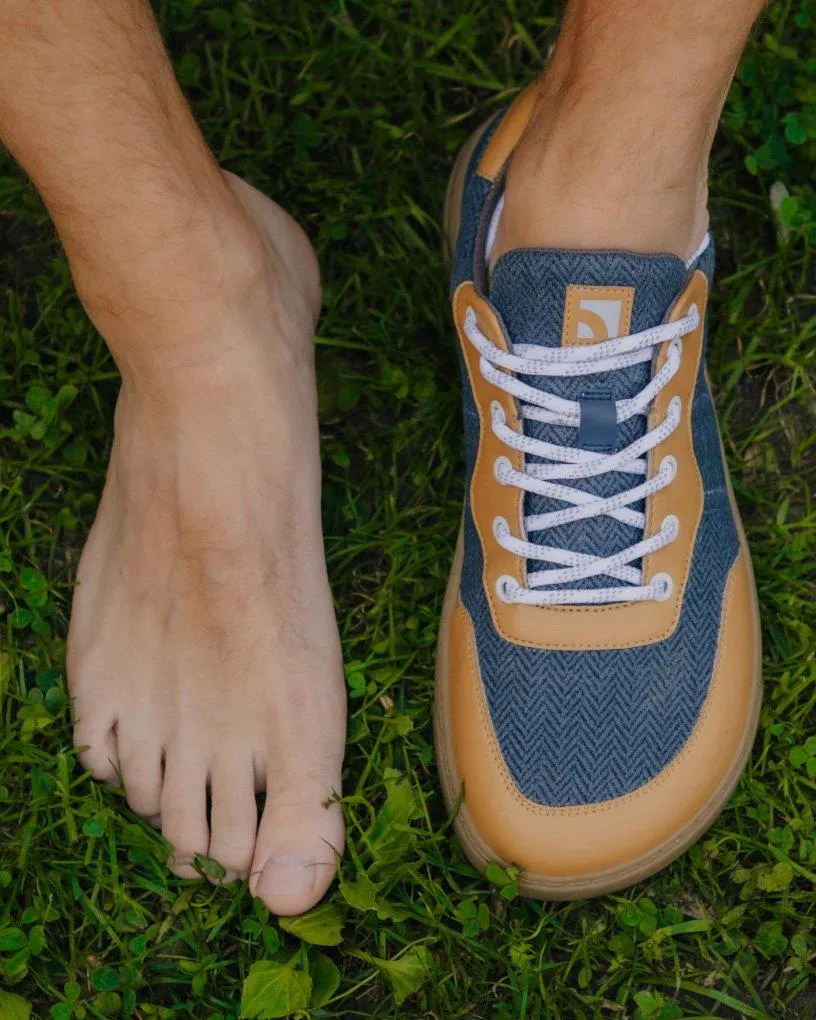NEED HELP? BOOK A CALL

BAREFOOT TRAINING VS SHOES
“ Rebuild YOU, Heal Your Pain Through Correct Movement - For Long Term Results.” - Lisa Maclean

Can Training Without Shoes On Benefit Your Foot Muscles? Absolutely!
“As the only contact point between the body and the ground the human foot plays a critical role in the way the body anticipates and reacts during every closed chain movement.”
Science has proven that it is far from normal for humans to be wearing closed or covered shoes all day long. Shoes support our feet, but they also restrict movement. They decrease flexibility, and inhibit our muscles from performing as they should.

This is why many professionals recommend exercising barefoot. Look at yoga or Pilates athletes. Their agility and balance is enhanced when their feet aren’t restricted by shoes. Similarly dancers are barefoot or wear flexible shoes that promote — not inhibit — movement.
When you train barefoot, you enhance sensory stimulation, improve joint health, and optimize balance. And when you are more stable, you’re less likely to suffer injuries due to a fall.
Barefoot training is exercising without footwear or very minimal material enclosing the feet. Training with minimal material around the foot allows the feet muscles to function better than if they had cushioned heels. With 206 bones in the body and 52 originating in the feet, we can understand how important it is to care for our foot strength and stability. The feet are responsible for transferring body weight to propel the entire body forward.
The human body is designed to function without external feet support. When we train barefoot, stabilizer muscles and connective tissue suddenly activate. This does not happen to the same extent when you wear sneakers. Training barefoot allows the body to take on stress applied to the body that sneakers normally take over. Strength gains within the feet help improve body awareness, balance, and body alignment.
If you apply barefoot training to your exercises, you may notice improvements in overall stability, body awareness, feet strength, and proprioception. Then if you find the right shoe —regular or barefoot-style—helps increase leg strength, which allows the body to encounter better shock absorption. With enhanced shock absorption, the body tolerates stress applied to the body in an injury-free manner.
BAREFOOT vs SHOES
BODY AWARENESS
The feet contain peripheral nerves and thousands of other nerves that impact your awareness of body position. These peripheral nerves are responsible for sending signals to the brain. If these nerves do not respond correctly you will lose muscle control and feeling throughout the body. This leads to disruptions in keeping the body upright and stabilized. Barefoot running will allow the nerves to send signals to the body improving muscle mind connections.
STABILITY & AGILITY
The type of shoe you wear sets the foundation for proper movement. Shoes take away the stress that feet and ankles should be dealing with and adapting to. This diminishes ankle stability and strength, which is vital to human performance. Ankle stability and agility have a major impact on your results, especially in athletes.
FEWER MUSCLE IMBALANCES
Shoes that provide this excess support create imbalances that later lead to injuries. Shoes can hide your weaknesses, whereas training barefoot often reveals the imbalances that need addressing. This natural barefoot movement amplifies ankle, knee, and hip mobility issues. All of which are observed through foot pronation, range of motion, gait, stiffness, and painful movement.
If you have good proprioception then they have a good sense of where your body is in space. Barefoot training can help improve this due to movement patterns the brain records. The plantar surface of the feet plays a major role in muscle connections and movement patterns. Proprioceptors help activate feet muscles to provide stability for the body to transfer weight. If these proprioceptors are firing, you will experience fewer muscle imbalances and better results.
IMPROVE YOUR CORE STRENGTH
The core. The centre of stability and the centre of power. When it comes to any dynamic movement or exercise – core strength and stability are critical to the way force is generated or transferred through the human body.
The foot. The base of stability and only contact point between the body and the ground. Studies have shown that it is more efficient to strengthen the core via the foot. The access into foot to core sequencing is via an exercise called short foot. (See Video Below)
IMPROVE YOUR BALANCE WITH SMALL NERVE PROPRIOCEPTION
The skin on the bottom of the foot contains thousands of small nerve proprioceptors all of which are sensitive to different stimuli. As soon as we put on our shoes our nervous system inherently becomes slower. This delayed neuro stimulation of the foot is small or micro which means it is hard to detect by the average person – however it is happening. Accumulatively this results in micro-trauma and micro-compensation.
WHAT TO WORK ON??
1- Barefoot release to improve your balance
Next time you hit the gym start your workout start with just 5 minutes of trigger point release the bottom of the foot. A 2015 study showed that 5 minutes of manual trigger point release was associated with an immediate improvement in single leg stability and postural control.
2- Texture Stimulation
Your feet can affect everything else in your body. How you exercise will directly affect the pressure on your knees, hips, low back, and neck, so it can lead to many injuries. When exercising, pay attention to the skin on the bottom of your feet. It is critical for balance, posture, motor control and human locomotion. Texture will stimulate your body’s nervous system through the skin on the bottom of your feet. When using it, you may notice an improvement in your postural control, stability and strength
3- Foot Exercise
This exercise conditions your feet muscles for endurance. It requires no equipment and you can do it anywhere — even seated.
In one study, short foot exercise was used to address chronic foot instability. Thirty adults were monitored during exercise for eight weeks. Scientists measured the quantitative somatosensory of joint position sense, vibration sensory thresholds, balance, and ankle instability. The group that performed the foot exercise showed significant improvement in all the categories. Performing Foot Exercises was more effective than regular physical therapy for treating ankle sprain patients.
WHAT'S MISSING IN FOOTWEAR
Running completely barefoot is not realistic in most situations. If you opt for minimalist shoes, I encourage you to select a supportive style specific to the type of training.
The minimalist shoe should mimic the shape of the foot as closely as possible. It should aid in protecting tendons, ligaments, and surrounding muscles of the foot. Look for minimalist shoes that fit like a sleeve rather than providing too much stiffness and cushion.
Remember that everyone's feet are different, including the arch and the way you strike the ground. Take it slow if you are new to barefoot training. Too much impact and compression can affect the lower extremity.
Most importantly, you want to have the right shoes that create the right movement patterns. Instability in the feet affects the entire kinetic chain.
Despite all of past and current footwear innovations, one aspect of the shoe that has not evolved in the past 50+ years is inside of the shoe! Meet the sock liner.
This simple, flat, foam inner sole is pretty much standard in all shoes. At 1-2mm thick, the sock liner serves as a cushioned layer for sweat absorption and in some shoes has arch support.
Almost as an after thought, the sock liner doesn’t seem to play a role in movement and foot function. Or does it? Could it?
What’s interesting is that the only part of the shoe that actually touches the foot is the sock liner. And with the foot as a sensory gateway to the nervous system, is this not a missed opportunity?
IN CONCLUSION
There is a powerful interconnection between the deep foot stabilizers (intrinsics) and the deep core stabilizers (pelvic floor, deep rotators etc) – I refer to this as our local stabilization pathway.
In dynamic movement such as walking the only contact point between the body and the ground is our foot – therefore foot stability is crucial to proper transfer of impact forces. When it comes to quickly and efficiently transferring these impact forces during walking – the faster our feet and core can “talk” to each other the better our walk, the decreased the risk of injury and the more efficient our gait (less energy).
The exercise for integration our feet and core is called short foot. Check out the video below on how to integration foot to core sequencing via short foot.
So the next time you go to the gym or have you weekly rehab session if you are already training barefoot – I challenge you to ask yourself. Are you barefoot with a purpose? Are you integrating an intentional foot contraction during your exercise?
I recommend start your session by integrating 5 minutes of foot to core exercises (see video above) or integrate it throughout the exercises (think kettle bell swings).
A BIT OF COMMON SENSE
All that said, moderation is key. In theory, barefoot walking is beneficial since it's a more natural way of walking — but if done for longer periods of time, it can lead to problems. Because of the complexity of the foot and ankle area (it comprises 28 bones, 33 joints, and 112 ligaments controlled by 13 extrinsic and 21 intrinsic muscles), it's almost impossible for every aspect of a person's foot to function in a neutral position naturally. This is why properly structured and fitted shoes continue to be important in getting your feet as close to neutral as possible.
Of course, shoe choice matters. If you tend to wear shoes that have narrow or pointy toes or heels greater than 2.5 inches tall, going barefoot can be the lesser of two evils. Narrow-toed and pointy-toed shoes can lead to hammertoes, bunions, and pinched nerves, while excessively high-heeled shoes can cause metatarsalgia as well as ankle sprains. And while going barefoot might feel freeing, there's something to be said for keeping your feet safe, to a certain extent. Shoes also protect your feet from the elements, such as sharp objects on the ground and hard surfaces.
If you are struggling with what to do, when to do it and How to ensure you are getting the most out of your time, then check out more info on my one on one coaching:





